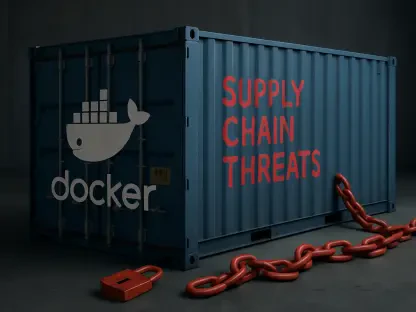In an era where digital connectivity underpins nearly every facet of daily life, a staggering disruption unfolded as Amazon Web Services (AWS) experienced a major outage in its US-EAST-1 Region, based in Northern Virginia. This critical hub, often considered the backbone of global internet infrastructure, faltered, sending shockwaves through industries ranging from entertainment to finance. Reported initially on the AWS Health Dashboard at 12:11 AM PDT, the incident exposed how a single regional failure can halt operations for countless services worldwide. The scale of this event raises pressing questions about the reliability of centralized cloud systems and the vulnerabilities they harbor.
Critical Moments of the AWS Disruption
The outage began with alarming signs of increased error rates and latencies across multiple AWS services, as flagged on the Health Dashboard in the early hours. By 1:26 AM PDT, the focus narrowed to high error rates tied to the DynamoDB endpoint in the US-EAST-1 Region, a database service integral to many applications. This technical glitch quickly snowballed, impacting dependent AWS offerings and revealing the fragility of interconnected digital ecosystems.
Just over half an hour later, at 2:01 AM PDT, AWS identified a probable root cause: a DNS resolution issue with the DynamoDB API endpoint. Teams mobilized to explore multiple recovery paths, though no immediate resolution emerged. The cascading effect of this localized problem demonstrated how even a specific technical failure can disrupt global operations, leaving businesses and users scrambling for alternatives.
The breadth of affected services painted a grim picture of dependency, with major platforms like Disney+, Snapchat, and Verizon rendered inaccessible. Even Amazon’s own products, including Alexa smart speakers and Ring doorbells, malfunctioned, underscoring the outage’s reach. From retail giants like McDonald’s to communication tools like WhatsApp, the incident highlighted the critical role of AWS infrastructure in sustaining modern digital life.
Sector-Wide Fallout and Industry Impacts
Entertainment platforms bore a significant brunt, with services like Hulu, Roblox, and Fortnite going offline, disrupting leisure activities for millions. This wasn’t just a minor inconvenience; it reflected how deeply embedded cloud services are in everyday experiences. Users worldwide found themselves cut off from streaming content and online gaming, spotlighting the outage’s pervasive nature.
The financial sector faced equally severe challenges, as banking apps and cryptocurrency platforms such as Venmo and Coinbase became unavailable. In the UK, Lloyds Banking Group reported downtime for its digital services, while government operations, including HMRC websites, struggled to maintain functionality. These disruptions exposed vulnerabilities in critical systems that manage transactions and public services, raising alarms about economic and administrative stability.
Government websites in both the US and UK also stumbled, with access to essential online portals interrupted. This cross-border impact emphasized the global reliance on a single AWS region and sparked discussions among industry leaders about the risks of centralized infrastructure. The outage became a wake-up call for sectors that often assume uninterrupted digital access as a given.
Public Frustration and End-User Struggles
For everyday users, the outage translated into tangible disruptions, as routine tasks became impossible without access to key apps and websites. Banking services were out of reach for many, stalling payments and financial planning. Smart home devices like Alexa failed to respond, while communication platforms like Signal left users disconnected, amplifying a sense of helplessness.
Social media platforms buzzed with complaints and shared experiences, reflecting widespread frustration over the sudden loss of digital tools. Reports of inaccessible educational apps like Duolingo and social hubs like Reddit further illustrated how the outage touched diverse aspects of life. Public sentiment quickly turned toward questioning the dependability of cloud-based systems that power modern society.
The collective reaction underscored a broader concern about over-reliance on a handful of tech giants for essential services. Many users expressed unease at the lack of immediate alternatives, highlighting a gap in preparedness for such widespread failures. This groundswell of discontent pointed to an urgent need for more robust solutions to safeguard digital access.
Adaptive Measures During the Crisis
As AWS worked to restore functionality, updates on the Health Dashboard remained the primary source of information, though they offered limited clarity on resolution timelines. Affected companies and users, meanwhile, sought temporary workarounds, with some businesses pivoting to manual processes or alternative platforms where feasible. These stopgap measures, while imperfect, showcased resilience in the face of unexpected challenges.
Certain organizations attempted to mitigate losses by rerouting traffic or leveraging backup systems, though the scale of dependency on US-EAST-1 made this difficult. For instance, smaller enterprises without redundant infrastructure faced steeper hurdles compared to larger entities with diversified setups. Such disparities revealed varying levels of readiness across industries to handle cloud disruptions.
These adaptive responses, though innovative in spirit, were often insufficient to fully bridge the gap left by the outage. They did, however, spark conversations about the importance of contingency planning and the potential for hybrid or multi-cloud strategies. The crisis became a testing ground for creative problem-solving under pressure, even if results were mixed.
Reflections on a Digital Wake-Up Call
Looking back, the AWS outage in the US-EAST-1 Region stood as a defining moment that exposed the fragility of global digital infrastructure. It revealed how a localized DNS resolution issue with DynamoDB could cascade into a worldwide crisis, disrupting everything from entertainment to essential government functions. The incident served as a stark reminder of the risks tied to centralized cloud dependency.
Moving forward, actionable steps must include a push for enhanced redundancy and resilience in cloud systems, ensuring that single points of failure do not cripple entire sectors. Businesses and policymakers alike should prioritize investment in diversified infrastructure and robust backup plans over the next few years, from now through 2027 and beyond. Such measures could prevent similar disruptions from escalating to this magnitude.
Additionally, this event opened the door to deeper industry collaboration on building fail-safes and improving transparency during outages. Encouraging multi-cloud architectures and fostering greater user awareness about digital risks represent critical paths to explore. By learning from this disruption, stakeholders have an opportunity to fortify the internet’s foundation against future shocks.









